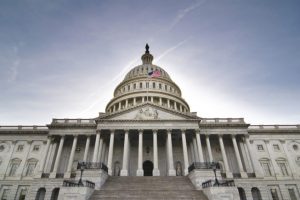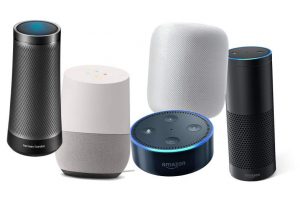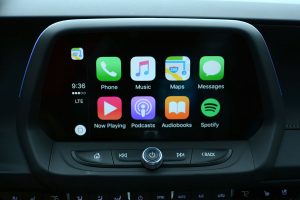We know you probably don’t buy CDs anymore, and that you’re not reading the lyrics from the CD case insert. That doesn’t mean you don’t feel the need to look up the lyrics from time to time, right? Especially those fast-paced rap songs, they can be really tricky to figure out by just listening. But when you go online to do that, have you ever thought about whether these lyrics sites have the right to publish those lyrics and make money off of the ads on the site? Probably not.
On this episode of Musonomics we talk about lyrics licensing and how the changes in the music industry are affecting the hardworking people who wrote those lyrics – the songwriters.
You’ll hear from Darryl Ballantyne, CEO and founder of LyricFind. It’s a company that up to date has licenses with over 4,000 music publishers, to try and make sure that the songwriters and right holders are compensated for their work when the lyrics end up online. How did he come up with the idea to start licensing lyrics and how did the music publishers react?
In the end, the people losing out on unlicensed lyrics being published online are the songwriters, so we also talk to Phil Galdston, whose songs have sold 70 million copies worldwide. What’s his take on the songwriters’ struggle to be able to sustain themselves by just writing songs in the digital era? And if you want to hear a longer version of the interview with Phil Galdston, you can find it here.
As always, you can listen to the new episode on iTunes, or stream it on Soundcloud or YouTube.


 The most sweeping update of American music copyright in a generation is now law. In this episode of Musonomics, Larry Miller talks to three people that shaped or closely followed this bill from draft to signing: Jacqueline Charlesworth, Mitch Glazier, and Robert Levine on why the Music Modernization Act was so urgently needed, how it came to be, and what happens next.
The most sweeping update of American music copyright in a generation is now law. In this episode of Musonomics, Larry Miller talks to three people that shaped or closely followed this bill from draft to signing: Jacqueline Charlesworth, Mitch Glazier, and Robert Levine on why the Music Modernization Act was so urgently needed, how it came to be, and what happens next. The Music Modernization Act, now set to become law, is silent on one big remaining issue for the music industry: U.S. AM/FM radio stations pay nothing to broadcast the sound recordings they play.
The Music Modernization Act, now set to become law, is silent on one big remaining issue for the music industry: U.S. AM/FM radio stations pay nothing to broadcast the sound recordings they play. Music is all around us, all the time – as we shop in a store, eat in a restaurant – or work off those calories in a spin class. In this episode of Musonomics, Prof. Larry Miller from the NYU Music Business Program explores the evolution and licensing issues of background and foreground music used in businesses, from the birth of Muzak in the wartime factory — and then we shift into overdrive with Soul Cycle’s rawk gawd Sean Linehan on how he sculpts the playlists for each of his sold out spin classes.
Music is all around us, all the time – as we shop in a store, eat in a restaurant – or work off those calories in a spin class. In this episode of Musonomics, Prof. Larry Miller from the NYU Music Business Program explores the evolution and licensing issues of background and foreground music used in businesses, from the birth of Muzak in the wartime factory — and then we shift into overdrive with Soul Cycle’s rawk gawd Sean Linehan on how he sculpts the playlists for each of his sold out spin classes. For millions of us, artificial Intelligence got real when we added smart speakers to our homes. Our AI assistants are standing by, ready to play music, turn on the news, start the oven, or see who’s at the front door. But as they make life easier, they’re also creating new challenges for the music and entertainment industries. And then there’s the matter of security…just how smart do we want our AI devices to be?
For millions of us, artificial Intelligence got real when we added smart speakers to our homes. Our AI assistants are standing by, ready to play music, turn on the news, start the oven, or see who’s at the front door. But as they make life easier, they’re also creating new challenges for the music and entertainment industries. And then there’s the matter of security…just how smart do we want our AI devices to be? Digital music services continue to drive recovery of the music industry after a long period of decline, and the AM/FM music radio business is starting to feel it. Young people born after Millennials don’t use radio the same as previous generations. Can commercial AM/FM radio compete with pure play digital music services? Russ Crupnick of MusicWatch and Steve Goldstein of Amplifi Media join us to discuss what’s happening to radio listenership, and how radio needs to respond to the threat posed by unlimited, commercial-free music.
Digital music services continue to drive recovery of the music industry after a long period of decline, and the AM/FM music radio business is starting to feel it. Young people born after Millennials don’t use radio the same as previous generations. Can commercial AM/FM radio compete with pure play digital music services? Russ Crupnick of MusicWatch and Steve Goldstein of Amplifi Media join us to discuss what’s happening to radio listenership, and how radio needs to respond to the threat posed by unlimited, commercial-free music.
